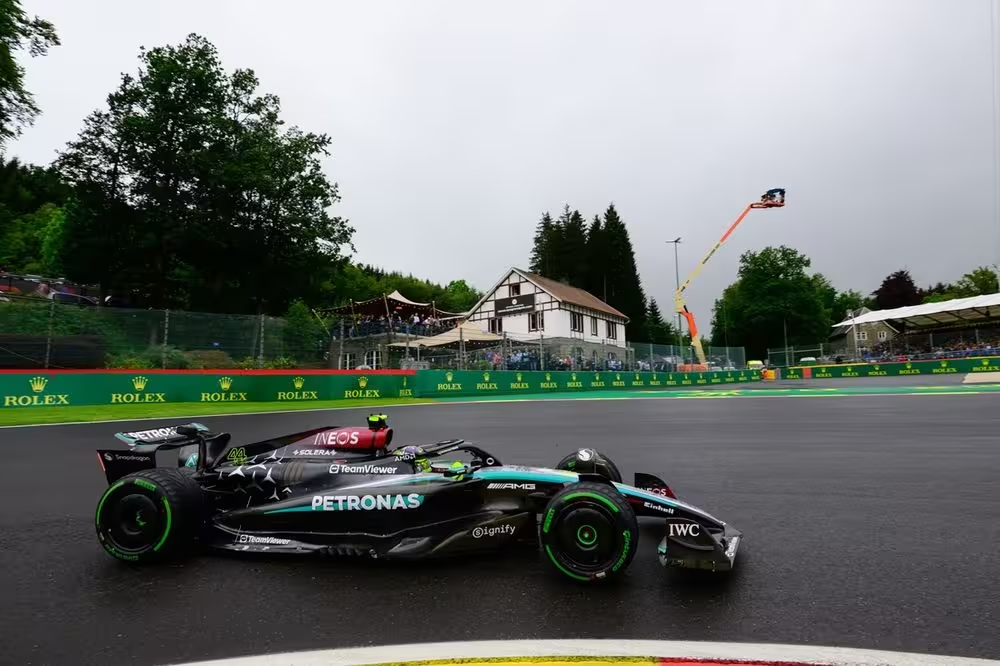The body language of Lewis Hamilton and George Russell as they climbed up the steps at the back of their engineering trucks after second F1 practice in Belgium said everything.
Heads looking down and shoulders drooped, as they spiralled their way up, it was clear that this had been a bad day for Mercedes.
Having arrived in Belgium with a hint of confidence that Spa-Francorchamps’ track characteristics and an upgraded floor could get it back in the fight at the front, the first day of running has brought a harsh reality check.
The W15 was off the pace, more than one second adrift of the benchmark. Worse than that, the car did not feel good at all.
As Hamilton summed up to the media later on: “It was a pretty bad day. I don’t know what to say. Obviously, it’s been feeling great in the past couple of races, and it just felt completely different.”
The biggest issue that Mercedes faced was that there was no really obvious explanation as to what was going on.
In first practice, the team had struggled in the twisty sector two compared to McLaren and Red Bull, so, for FP2, it elected to shift its focus to bias its performance more there.
But all that served to do was to hamper its straightline speed performance in the first and third sectors – with data suggesting it was losing up to 0.9 seconds on the straights alone.
Having had such a nailed-on balance at recent races, which had proved critical to pushes to podiums and wins, Mercedes found itself in a completely different spot where it did not have an obvious explanation for what had gone wrong.
Lewis Hamilton, Mercedes W15
Photo by: Erik Junius
As engineering work continued into the night at its Brackley factory, and the simulator ran on into the early hours, the conclusion was that for the rest of the Belgian GP weekend it needed to go back to what it knew.
That meant first abandoning the new floor it had brought, because it could not be totally sure that there was not some unintended aero or balance consequence that had been introduced from its running.
Plus, Mercedes came to the conclusion that it needed to roll back on some mechanical settings it had opted for to try to extract more from the car – and deal better with the high-speed sections at Spa.
As team principal Toto Wolff explained: “On Friday we were not competitive. But there wasn’t a clear direction on what it was. And honestly, I must admit that the overnight work that was done from Friday to…
Click Here to Read the Full Original Article at Autosport.com – Formula 1 – Stories…

